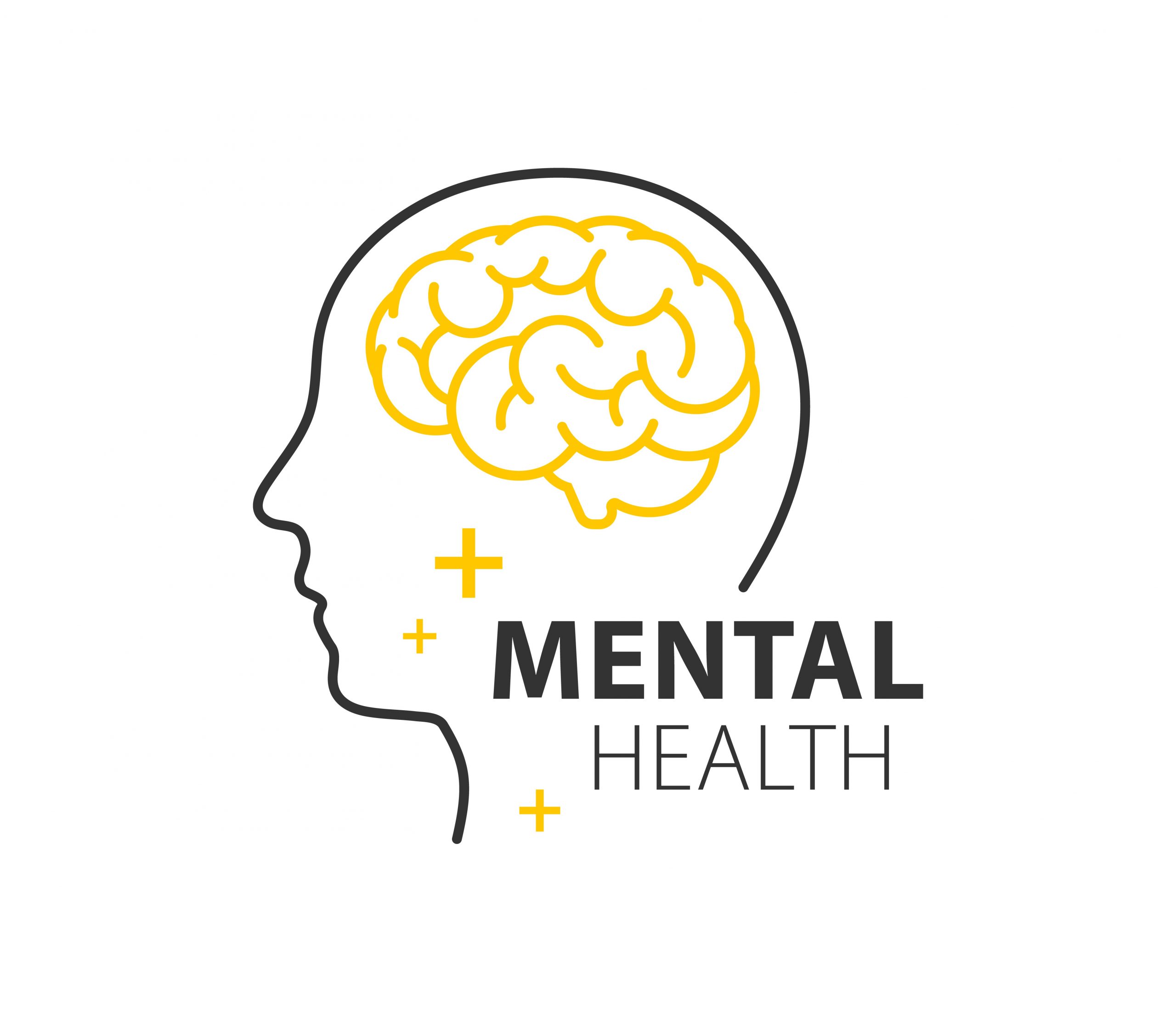Subscribe
Subscribe to EduBridge Blogs
Good mental health enables us to thrive through life’s activities with meaning and purpose. The impact of the covid 19 epidemic has created a sense of uncertainty and concern for many people’s emotional, psychological, and physical well-being.
Mental health issues, on the other hand, appear to be one of the most overlooked parts of health. This is because of the popular idea that extreme mental diseases such as depression or drug addiction are related with traditional and religious values, this has provided an underappreciated difficulty for people with true mental illnesses.
This article asserts that businesses must acknowledge the existence and reality of mental diseases in the workplace and commit to credible supportive mechanisms for managing employees’ mental health.

Exhibit 1: Workforce Age Group

The World Health Organization (WHO) defines health as a complete condition of physical, mental, and social well-being, not only the absence of sickness or disability. As a result, mental health is a condition of well-being in which an individual is aware of their abilities and capabilities to cope with life, work productively, and be relevant to oneself and the community.
Mental health in the workplace refers to all aspects of psychological, emotional, and social well-being and how they influence an individual’s behavior and productivity at work.
Exhibit 2: Mental Illness in the workplace

Cases of Predominant Mental Health in the Workplace
According to the results of the pcl. employee survey, 54% of respondents had already seen a drop in their mental health. When personnel were divided into age groups and generations, 68% were millennials and 24% were Generation X. This is clear because the majority of the respondents in the industries polled are millennials. Leaders will be better able to recognize and support employees who are struggling to be productive at work if they are familiar with the indicators of mental illness in the workplace. According to the information acquired from our interviews, the most prevalent mental disease symptoms displayed by employees in the workplace are anxiety, stress, mood swings, physical appearance, and irritability/withdrawal. These indications’ manifestations are explained below
Exhibit 3: Common signs of mental illness in the workplace

Anxiety: Feeling exceedingly frightened, worried, and tense about your ability to deliver on time or competently satisfy particular work requirements. Uncertainty or a lack of direction on the job, insufficient work assistance or resources, job insecurity, and demanding or tough managers can all contribute to this. Fear, lack of confidence in one’s competence, errors on the job, losing attention, disorientation, forgetfulness, helplessness or sobbing, restlessness, feeling uncomfortable, or avoiding specific people are some of the symptoms displayed by such persons.
Stress: Stress is defined as an overpowering feeling that impairs one’s ability to deal with mental or emotional pressure. Workplace stress is frequently induced by an excessive workload, obligations, unrealistic deadlines, and high expectations. Working overtime, a lack of sleep, an unhealthy eating routine, headaches, and weariness are all classic indications of workplace stress.
Mood Swing: A sudden change in one’s emotions caused by events or experiences, settings, thoughts, or others. Employees may exhibit mood swings as a result of their discontent with certain working events or experiences, especially when they are beyond their control. A flip from feeling good or cheerful to feeling sad, agitated, unfriendly, unexplained outbursts, or a change in attitude or behavior are common symptoms of mood swings.
Irritability and Withdrawal: Irritability and disengagement are acts taken by persons who are physically, intellectually, and emotionally disengaged or fatigued from the organization or their work activities. Common symptoms include a casual attitude toward work, tardiness/lateness, delays in work deliveries, loss of attention, unwillingness to communicate, and avoidance of social situations.
Physical Appearance: Physical appearance refers to an individual’s physical appearance and attire, notably in the office or at work functions. Signs of mental illness can occasionally be seen in an individual’s appearance, from personal grooming to the type and presentation of clothing worn. Wearing rough clothes, unpolished or cleaned shoes, wearing the same clothes on a regular basis, having unkempt hair, and so forth. They begin to appear disheveled or even unconcerned about violating the company dress code rules.
Leading Workplace Stressors for Poor Mental Health :Given that individuals will typically spend a quarter to a third of their lives working, parts of their mental and physical health mustn’t be disregarded.
Exhibit 4: Effect of work on mental health

Furthermore, while irritability/withdrawal, worry, and stress were identified as the major symptoms of mental health disorders expressed by employees in their current employment, 48% claimed that their jobs contributed to these sentiments. The following are the major causes that are now creating poor mental health in their different workplaces:
Job Pressure: Work pressure arises from heavy workloads, sometimes with particular expectations for an individual’s work to be delivered within an impossible timeline. According to the study results, 61% of respondents feel that work pressure is the leading cause of their poor mental health at work. Anxiety and burnout are two common negative effects of work pressure on employees. Taking into account the events of the covid19 crisis and its effects on organizations and businesses, It is no surprise that many employers may have subjected their workers to more work with limited budgets and a lack of resources that would support workers to deliver effectively on their jobs.
Organizational culture: The shared values, belief systems, and human behaviors that distinguish one organization from another. Several factors contribute to the existence of negative organizational culture, including not living company values, a lack of clear and healthy communication, hyper-competition, a greater focus on business profits than employee welfare, office politics, micro-management, low employee engagement, a lack of work flexibility, high employee turnover, and so on. 40% of respondents reported being psychologically strained as a result of their organization’s culture. Fear-based work cultures have a negative impact on business productivity since they tend to reflect in workers’ general output.
How Mental Health Affects Employee Productivity at Work

Employee’s mental health has a significant impact on whether they perform well or poorly at work. Several implications of mental health on work productivity and how employees have dealt with them were identified in personal interviews with certain individuals working in various industries such as Financial Services, Retail, Consulting, Technology, and Legal. Mental diseases have a greater impact on high-performing personnel, which affects their productivity at work. The following are some of the most common effects and consequences of mental illness on employee productivity.
- Distractions and troubles focusing on the task This could be a result of failing to strike the proper balance between work and home life; thus, the negative effect of dealing with issues at work has an impact on the quality of output.
- A high turnover rate exists. This is potentially the most detrimental effect of mental illness on workplace productivity. Aside from demoralizing and degrading present staff productivity, a high turnover rate incurs additional corporate costs for recruitment and training.
- Exhaustion and a loss of energy Employees who replace or relieve missing employees frequently experience low morale and weariness. These personnel will be expected to perform more duties than are typically associated with their positions. Individuals in this condition with little help are prone to accidents, missing deadlines, and total loss of interest and energy in performing well on the job.
- Errors that occur frequently or on the job This is an unavoidable expense of working while physically or psychologically fatigued. When the body is weak and the brain is overworked with little rest, there is a greater tendency to lose control over maintaining concentration on the job.
- Absence from employment. This is defined as employees’ habitual physical or mental absence from work. While companies anticipate absences such as holidays and sick breaks, repeated absences – “thought absences” in particular – due to mental illness, disengagement from work, or other associated distractions can result in a loss of focus and lower productivity in employees’ work.
Mental health support in the workplace

- Work programs and policies: In order to improve the mental health of the workforce, organizations may need to be generous and flexible enough to evaluate and update existing workplace policies, as well as implement programs that will promote employees’ well-being and productivity. Flexible hours or hybrid work culture rules, paid leave, sick leave, teamwork, constructive performance feedback and reviews, communication channels, and counselors or mentors, for example, can all be examined and reframed to create a good and mentally healthy, stable workforce.
- Physical workspace design: Before and after the pandemic, the average employee will spend at least 40 hours per week at work. These hours spent at work have an effect on our moods, routines, and well-being because the workspace and the hours people dedicate to being physically present at work have an impact on their mood and productivity. It is critical to establish a physical environment and ambiance that best supports their mental and physical stability at work. This includes ergonomic workstations and chairs, a diversity of workspaces, warm colors, calming lighting, conference rooms, lounge areas, quiet rooms, and so on.
- Promote healthy behaviors: Healthy behaviors are simpler to promote when leaders purposefully model great habits and attitudes in the workplace. People are easily influenced by the behaviors or attitudes that their leaders often project, particularly their immediate supervisors or senior colleagues with whom they work closely. Being empathic, working constructively with subordinates, making time for employees, exhibiting a positive attitude toward work, knowing about the employees, encouraging associates to take leave and breaks, or providing support and motivation are some examples. Organizations should assist managers, work buddies, mentors, or counselors in collaborating with employees to take conscious actions to ensure positive well-being.
Conclusion
Without a doubt, mental health problems in the workplace have become a recent trend, and businesses would be stupid to underestimate its influence on their employees and overall corporate efficiency. Mental health wellness is no longer a “nice-to-have,” but rather a “must-have” for businesses.
EduBridge supports mental health at the workplace by providing access to resources and tools that can help employees improve their mental health because we believe that an unhealthy mental workplace will harm an organization’s personnel as well as its financial resources.
Recent Blogs
Related Blogs
Accelerate Your Career with Expert Guidance and Guaranteed Job*!
"*" indicates required fields


